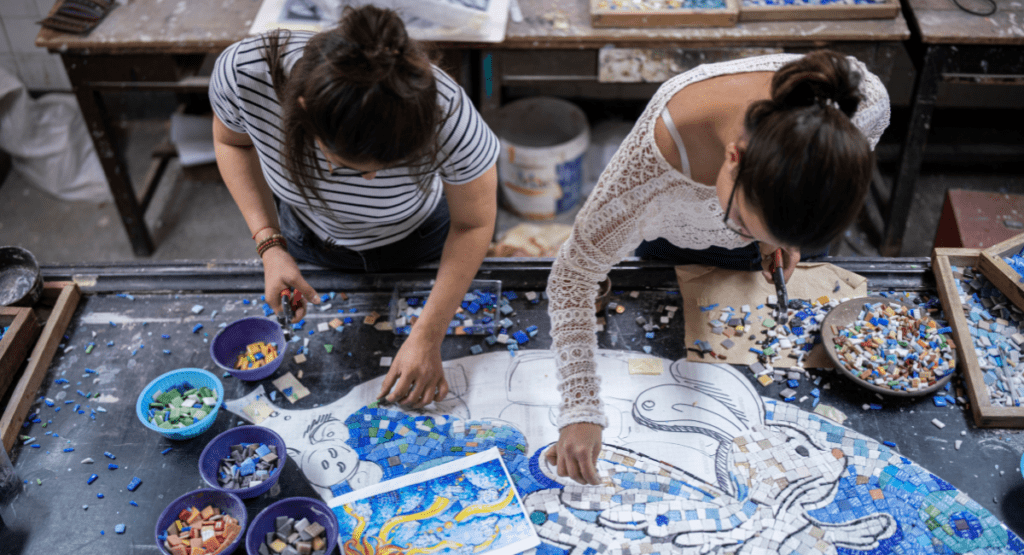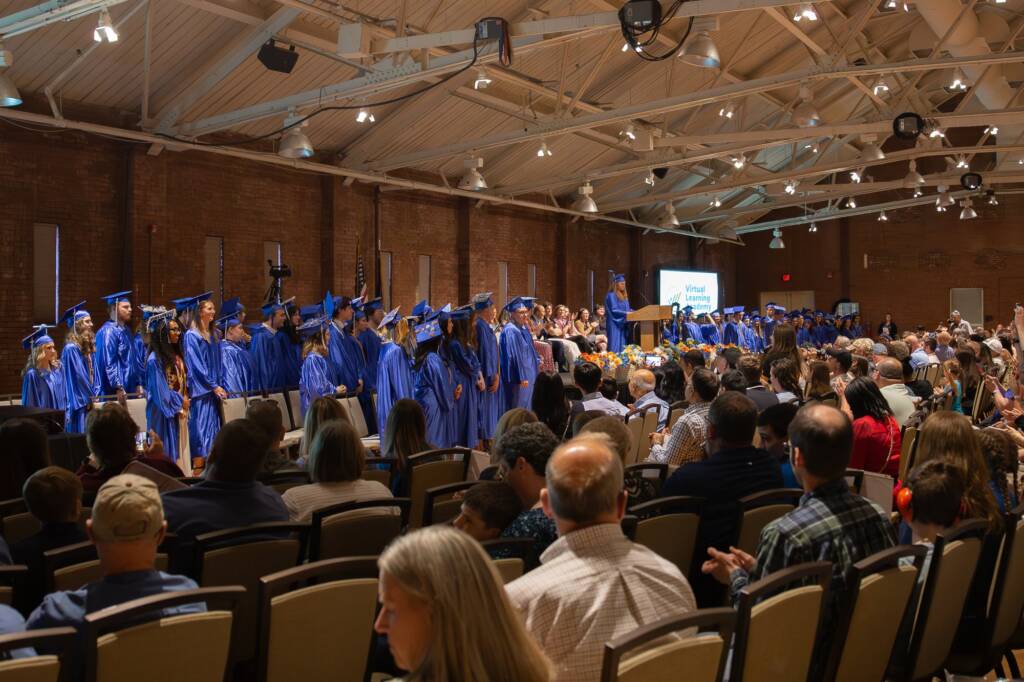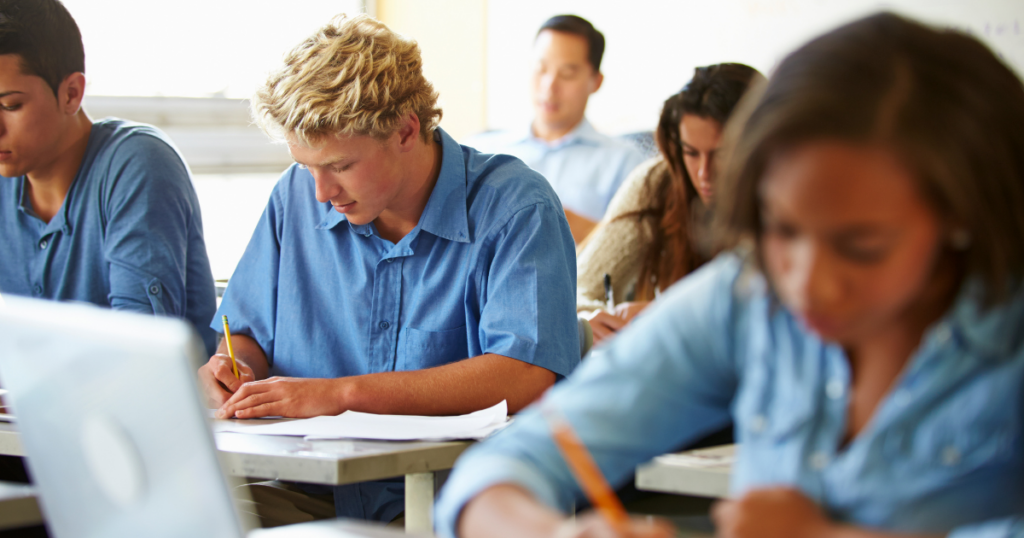Maybe you’ve heard some buzz out there. Student-centered learning. Personalized Learning. Competency-based education.
What’s it all about?
It’s about connections.
It’s about students establishing when, where, and how they learn. It’s about teachers developing strong relationships with their students to foster that learning.
It’s about something new: customized learning.
It’s about tailoring education to fit the needs of individuals. Customized learning is not one-size-fits-all. It’s about connecting students to their learning, their communities, and their cultures. It’s about students communicating with their parents, caregivers, and teachers to drive when, how, why, and what they study.
It’s about empowerment.
We know that students don’t all learn the same way in the same day, but that’s how traditional education has worked for a long time. Customized learning empowers students to learn by giving them the agency to determine when, where, and how they learn–and to focus on mastery of a subject with a teacher’s expertise, help, and guidance.
The concept has been around for a while. In the 1960s and 1970s, the idea of “individualized instruction” developed around the idea that a student’s progression could be measured by mastery-not time.
Here in the digital age, customized learning embraces the same concept-but it looks a little bit different.
Want to learn more? Take a look at six things you didn’t know about customized learning:
1. It’s not all about technology
There’s a misconception that customized learning is about computers and technology replacing teachers.
Customized learning is just the opposite. It’s not about removing teachers and plopping students in front of computers and apps.
It’s about students and teachers working together to create meaningful learning experiences.
In the digital age, some of those experiences happen online-but not in a vacuum. Students don’t become part of some consistently running algorithm in a computer’s hard drive. They do engage with technology–and their teachers, parents, and guardians–to focus on mastery, not lock-step, head-down learning.
For some students, customized learning won’t have any technology components. Others might combine traditional classroom experiences with online ones. Still others might rely on technology more heavily to meet their needs, strengths, and interests.
The technology component doesn’t require students to sit in front a screen all day without interacting with people, either. In fact, customized learning requires arguably more interaction and contact with teachers than students may have had in a traditional classroom.
Why?
Customized learning requires that teachers and students communicate and interact regularly through any combination of online courses, team activities, projects, or experiences which require students to engage and learn in meaningful ways.
The relationship between the student and the teacher is critical to the student’s success, whatever the medium (see #2)
2. It’s personal
Here’s what’s different about customized learning from traditional learning: there’s no average student.
There are only students who have different needs, strengths, and interests-and different ways to learn.
Teachers have long known that every student learns differently and works at his or her own pace. They know that the current system doesn’t work for every student, but they are hemmed in by school schedules, deadlines, and grade-level expectations.
With customized learning, teachers can tailor a student’s needs, strengths, interests, and learning style to meet academic expectations.
Students in customized learning programs develop positive working relationships with teachers and communicate with them regularly.
All customized learning experiences are personal and focus on ways to allow the student to experience mastery–and hopefully success. (see #3).
3. It’s student-driven
While teachers guide, facilitate, share knowledge, and encourage students to do their best, in customized learning, the student is in the driver’s seat.
That’s the way it should be. While the student doesn’t always choose the content, the student chooses the when, where, and how of his or her learning.
In student-driven learning, students compliment lessons with active learning strategies, team projects, and valuable experiences as opposed to memorization.
They work with their teachers to give their learning a vision and a goal.
For learning to be effective-for it to stick-students need to invest themselves in the process. They’re not learning something for a teacher-they’re learning it for themselves, with a teacher’s help.
In the customized learning model, students decide when, where, and how learning will happen. For learning to happen, a student must be motivated to succeed and have a teacher who understands that student’s needs, interests, and strengths.
4. It’s rigorous
There’s another misconception out there that customized learning isn’t rigorous-if it’s student-driven and a student has no motivation, then it’s a joke, right?
Wrong.
In a customized learning model, the student still needs to show mastery of content before he or she can move on to the next level or receive credit.
For struggling students, showing mastery can be difficult. That’s where that strong student-teacher relationship comes in, and teachers work with their student.
For others, showing mastery may be impossible.
How about this one: if a student is just filling in the blanks in an online class, mindlessly clicking, that’s easy credit, right?
If that were how customized learning worked, yes.
But that’s not how customized learning works. Customized learning is not about mindless clicking for easy credit.
Teachers know that rigor requires the expectation that students perform at high levels-and that students have the ability to do so.
It’s about mindset. In a rigorous classroom, online or otherwise, students need to respond to higher level questions to demonstrate mastery.
The key is that teachers support students to achieve at high levels-and empower them to think for themselves. How do teachers do that? By providing students opportunities to show mastery. See #5.
5. There are multiple pathways
In a customized learning model, students can achieve mastery, demonstrate rigor, and gain credit by taking courses, completing projects, participating in unique experiences, working on teams, and taking college courses.
Any of those experiences can be in-person, online, or a hybrid of the two models.
The keys to success? Opportunity. And dedicated teachers who support their students’ interests, needs, and strengths in ways that allow students to drive their learning
6. It works
OK, so maybe you knew this one. But maybe you didn’t know how or why it works.
Now you do.



